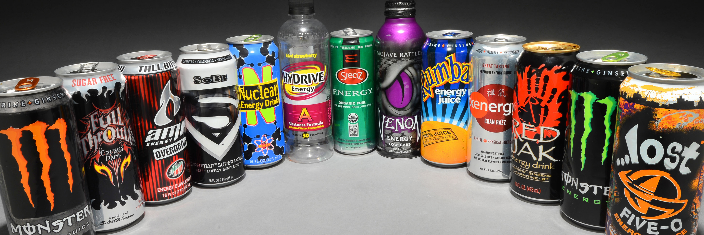Liquid Courage: How Safe Are Energy Drinks?
Hannah is a typical 15-year-old cheerleader. She spends eight hours a day at school, comes home to do her homework and then heads to the gym for cheer practice. With exhaustion setting in, she picks up an energy drink on the way to give the boost she needs to get through the grueling schedule of stretching, stunts, tumbling and dance. Sound familiar? It’s a common practice with many athletes—and cheer professionals, too.
But do energy drinks even work?
Stephanie Beveridge, wellness coach and owner of GymKix in Texas, says that they do, at least temporarily. “They pump your body full of sugar and tell your body to start producing insulin,” says Beveridge. “It’s almost like if your ‘check engine’ light is on, and you take it to get fixed and your mechanic turns the light off. But did it fix the problem?”
Even more concerning are the adverse health effects energy drinks can have. Beveridge cautions that they often contain harmful artificial colors like Red 5 (which can lead to hyperactivity) and artificial sugars that are carcinogens and neurotoxins: “Artificial sweeteners and colors cause headaches, joint issues, inflammation—all the things we’re trying to fix in our athletes. It’s counterproductive.”
In 2014, the World Health Organization published a study calling for more restrictions on the sale of energy drinks to young people. In particular, it highlighted some of the dangers of using energy drinks before or during sports practice—despite the fact that energy drinks are often marketed specifically as enhancing athletic performance. In a worst-case scenario, energy drinks can trigger heart problems even in healthy teenagers (according to cardiologist Dr. Fabian Sanchis-Gomar).
And the best-case scenario? According to a January 2013 article published in The New York Times, it’s that the drinks are completely ineffectual. “The energy drink industry,” researchers conclude, “is based on a brew of ingredients that, apart from caffeine, have little, if any benefit for consumers.”
So if the energy drink won’t help Hannah perk up for her cheerleading practice—and might even harm her—what should she do instead?
Beveridge swears by water with a drop or two of essential oils. “They’re therapeutic and detoxifying to organs. They produce energy from the inside out,” she says. “We use plants from the indigenous area, so they have the most potency.”
Another option is pure coconut water, which has been touted by top athletes and health experts as a healthier, more hydrating option. It has been found to be just as nourishing as a sports drink but creates less nausea or feeling of fullness. Sports nutritionist Nancy Clark just urges athletes to be smart about replenishing calories for longer workouts, too. “Supplement with a quick source of energy, like a banana or some raisins and a handful of pretzels, to provide nutrients to replenish your stores,” she recommended in a WebMD article.
A young athlete like Hannah has better options than energy drinks for those long practices, and coaches and parents can play a crucial role in helping her to make those healthier choices. “It’s really about wellness education,” Beveridge says of the biggest impact coaches can make on their athletes, “because they don’t realize how harmful energy drinks are to young bodies.”
–Alicia Thompson








